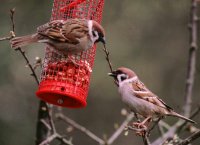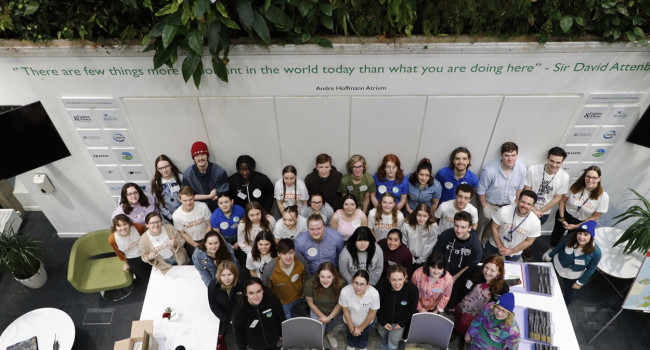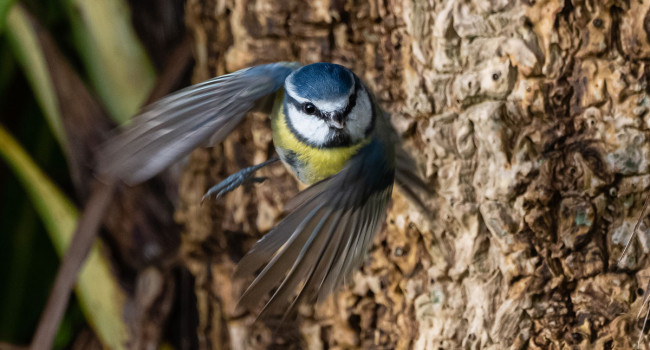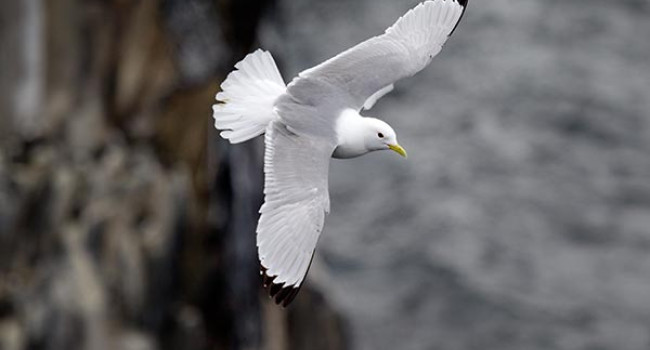Sparrow numbers rise at garden feeders
01 Oct 2015 | No. 2015-50
With significant declines in both House Sparrow and Tree Sparrow populations, things could not have looked worse for UK sparrows. However, British Trust for Ornithology (BTO) Garden Bird Feeding Survey data from the last two winters shows that more of them are turning to our garden feeding stations.
The House Sparrow population has declined by over two-thirds since the late 1970s, and the Tree Sparrow population suffered from a dramatic population crash in the early 1980s, and as a result both species are red-listed birds of conservation concern. There are many theories behind the decline of House Sparrow, but lack of food in winter due to agricultural intensification and an associated reduction in first-year survival rates have been important drivers behind both declines. The huge losses of these once-familiar sparrows are an example of how land use changes can affect common birds, but garden bird surveys can help us to understand these effects.
While the UK Tree Sparrow population is a fraction of what it was in the 1970s, results from the BTO Garden Bird Feeding Survey (GBFS) reveal that numbers at garden bird feeders have been increasing since the late 1980s. Winter 2014/15 saw the highest number of Tree Sparrows at suburban garden feeders since the survey began in 1970, and their highest average numbers at rural garden feeders since 2010. Whether these results reflect the increasing importance of supplementary feeding remains to be seen but the importance of seeds outside of the breeding season suggests that this could be a factor.
In recent years national House Sparrow numbers have fluctuated, but according to GBFS results numbers visiting garden feeders have stabilised, and even appear to be showing a slight upturn. Rural House Sparrow numbers were at their highest since 2005 at garden feeders, and since 2009 at suburban ones, though these recent counts remain much lower than in the 1970s.
Clare Simm, BTO GBFS Organiser commented, "The boost in sparrow numbers may have been helped by the recent mild winters that we have experienced, but garden bird feeding stations could be extremely important. It will be interesting to see how they fare in the coming winter. Long-running surveys like GBFS are extremely important in monitoring how birds use gardens but could not happen without the efforts of our dedicated volunteers."
The BTO Garden Bird Feeding Survey is a focused scheme that sits within the BTO’s wider garden surveys. To find out more information on how to take part in our garden surveys, including receiving a free enquiry pack and magazine, please get in touch by emailing gbw [at] bto.org, telephoning 01842 750050, or write to GBW, BTO, The Nunnery, Thetford, Norfolk, IP24 2PU. More information can also be found at www.bto.org/gbw
Notes for Editors
- More information about BTO Garden Bird Feeding Survey including the full results can be found here:
Hard copies of the 2014/15 GBFS Newsletter are also available.
- National trends for Tree and House Sparrow populations can be found here:
- The BTO Garden BirdWatch is the only nationwide survey of garden birds to run weekly throughout the year, providing important information on how birds use gardens, and how this use changes over time. Currently, some 13,000 people take part in the project. The project is funded by participants’ contributions and is the largest year-round survey of garden birds in the world. For more information see www.bto.org/gbw
- The BTO is the UK's leading bird research charity. A growing membership and up to 60,000 volunteer birdwatchers contribute to the BTO's surveys, collecting information that underpins conservation action in the UK. The BTO maintains a staff of 100 at its offices in Thetford, Stirling, Bangor (Wales) and Bangor (Northern Ireland), who analyse and publicise the results of surveys and projects. The BTO's work is funded by BTO supporters, government, trusts, industry and conservation organisations.www.bto.org
Contact Details
Clare Simm
(BTO GBFS Organiser)
Office: 01842 750050
(9am to 5.30pm)
Email: clare.simm [at] bto.org
Paul Stancliffe
(BTO Media Manager)
Office: 01842 750050
(9am to 5.30pm)
Mobile: 07585 440910 (anytime)
Email: press [at] bto.org
Images are available for use alongside this News Release.
Please contact images [at] bto.org quoting reference 2015-50
The BTO has an ISDN line available for radio interviews.
Please contact us to book an interview
Office: 01842 750050







Share this page